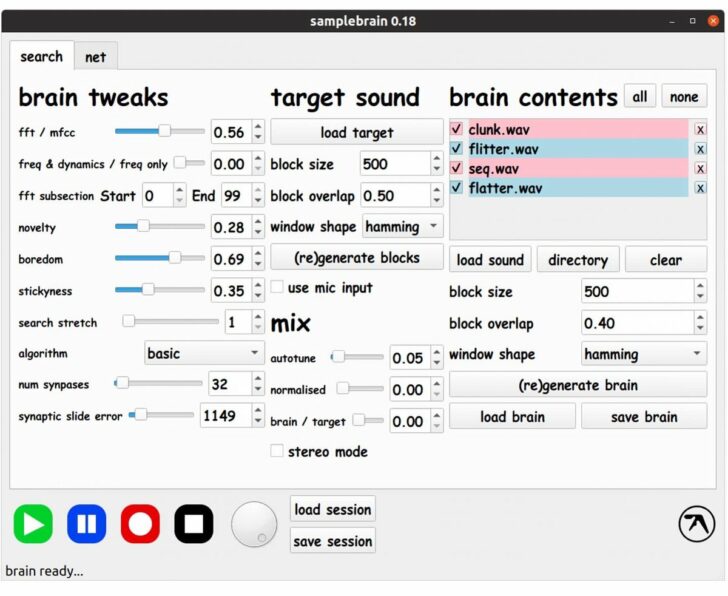Warp Records has announced the availability of a free & open source application, Samplebrain, created by Richard D. James (Aphex Twin) and Dave Griffiths.
Samplebrain chops samples up into a ‘brain’ of interconnected small sections, called blocks, which are connected into a network by similarity. It then lets you process a target sample, chopping it up into blocks in the same way, and Samplebrain tries to match each block in your target sample with one in its ‘brain’.

Here’s what James has to say about it:
“What if you could reconstruct source audio from a selection of other mp3’s/audio on your computer?
What if you could build a 303 riff from only a cappella’s or bubbling mud sounds?
What if you could sing a silly tune and rebuild it from classical music files?
You can do this with Samplebrain.”
Pricing and Availability
Samplebrain is available now as a free download via Github. The source code is also available.
If you’re tried Samplebrain, leave a comment and share your thoughts on it!


Wonder how this app will react to some harsh noise wall and modular blips, I lowkey want to make the app crash with stuff from my archives.
Raw and crystal clear
Awesome thanks
Cannot wait to try this out
The Apple Silicon build doesn’t run on my M1 MacBook Air.
Mostly interested in the similarity network. There are several tools to automatically classify drum-like sounds (Algonaut Atlas, XLN XO…). Hoping this one will go further with continuous pitched sounds, including loops.
…several tools trying to automatically classify…
anyone get anything interesting from it? WAV only for the files it seems and it likes shorter files as the source… i began to get something kind of interesting… but mainly it’s crashing for me… i suspect RDJ has more patience than me! (lucky for us)
tried on an older mac with OS X 10.13 and it wouldn’t open. tried another another old mac OS11.6 and it would load and worked once nicely. but crashed twice to get to that point. and couldn’t get a lot of sound from it. also it’s not displaying the text inside the boxes (they’re all white)
so doing it on windows – I got it to work but it is kinda weird – I can’t quite figure out when it is recording but it takes a while to generate all the stuff into a pattern – once it runs you can tweak it – I found if you play with say the stretch it starts to feel intuitive. I can see using this for sure to build some loops that I will use later
huh there is a linux flatpak – I wonder if I can run this on a steam deck
Hey, you can build from source.
There is a tutorial on the Github page (link in this article)
Kind of tired of Aphex face… That picture over and over again. Can we escape the repetition of the same artist(s) over and over?
yes! stop making that big face!!
intresting .. if you are intrested in this real time corpus manipulation stuff mabey check out Rodrigo Constanzos work .. some very usfull M4L devices here ..https://github.com/rconstanzo/sp-tools